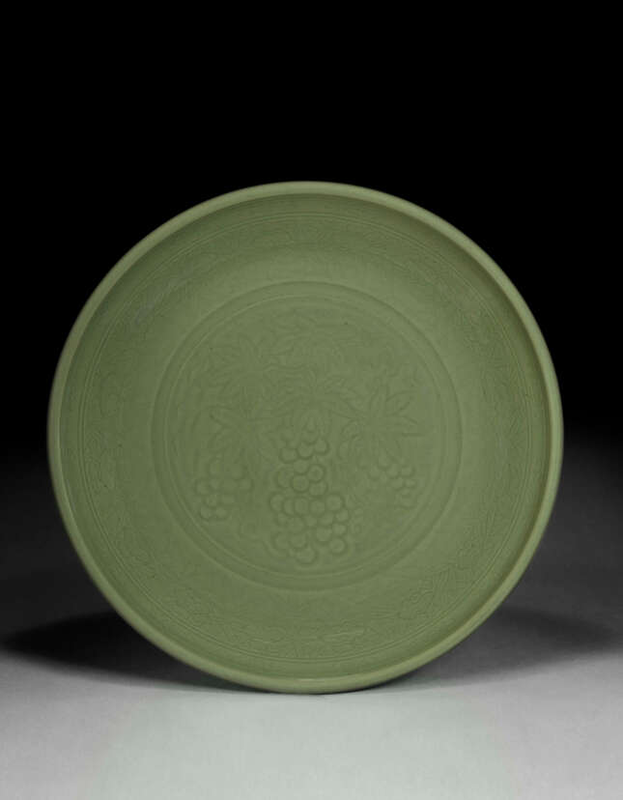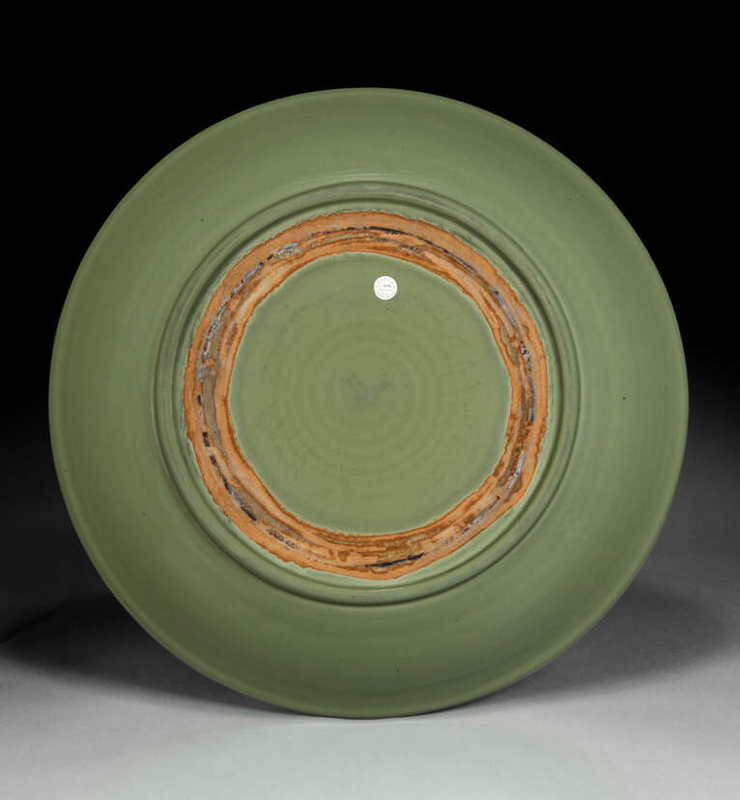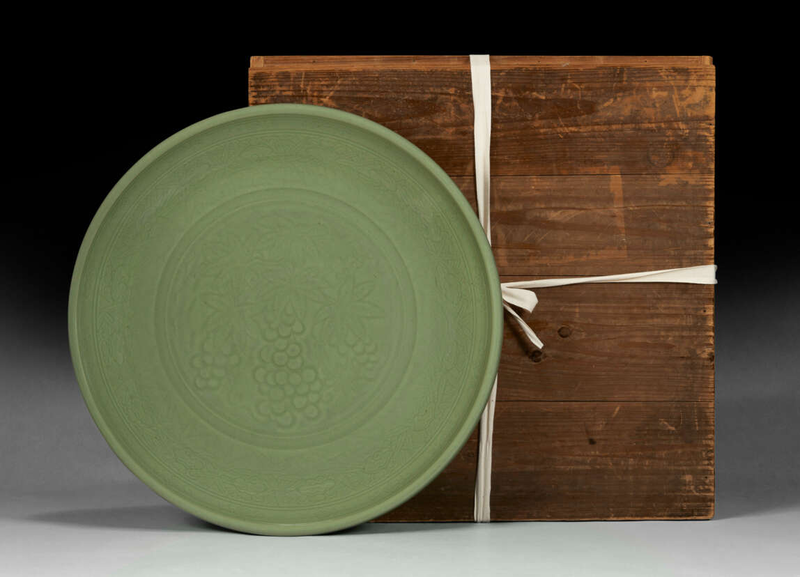A very rare and large carved Chuzhou Longquan celadon 'grapes’ dish, Yongle period (1403-1425)
Lot 1065. A very rare and large carved Chuzhou Longquan celadon 'grapes’ dish, Yongle period (1403-1425); 55.5 cm diam., Japanese wood box. Price realised USD 81,900 (Estimate USD 40,000 – USD 60,000) © Christie's 2023
Provenance: Private collection, Kyoto, acquired between 1920-1930.
Note: This dish belongs to a small group of finely made Longquan chargers produced at the Chuzhou Imperial kilns, Zhejiang province, during the early Ming dynasty. A shard carved with the same design on the interior found at the Chuzhou Imperial kilns, is illustrated in Faxian-Da Ming Chuzhou Longquan guanyao, Hangzhou, 2005, p. 294, no. 9-1, and indicates an imperial patronage for this type of dish.
Among the designs produced at the Chuzhou imperial kilns, the motif of ‘grapes’ appears to be one of the rarest. Only three heirloom examples bearing this design appear to be known, one is in the Palace Museum, Beijing (50.6 cm.), illustrated in Longquan of the World: Longquan Celadon and Globalization, Beijing, 2019, no. 125; another in the Topkapi Saray Museum, Istanbul (51.8 cm.), in Faxian-Da Ming Chuzhou Longquan guanyao, Hangzhou 2005, p. 295, no. 9-2.; the third was included in the exhibition In pursuit of Antiquities, Thirty-fifth Anniversary Exhibition of the Min Chiu Society, 22 December 1995-18 February 1996, and sold at Christie’s New York, 16 September 1999, lot 309. All three examples are carved with fruiting sprays on the exterior; the current charger appears to be the only one in this group without decoration on the exterior.
The design on the current dish is closely related to that found on an underglaze-blue dish (41 cm. diam.) excavated from the Yongle stratum of the Ming Imperial kiln site at Zhushan, Jingdezhen, illustrated in Yuan’s and Ming’s Imperial Porcelains Unearthed from Jingdezhen, Beijing, 1999, pp. 166-167, no. 51. This parallel production at two separate sites, each working with different clays and different glazes, appears to have provided shared inspiration to the artisans as well as a healthy competition.
Christie's. Important Chinese Ceramics and Works of Art, New York, 21 sept. & 22 sept. 2023

/https%3A%2F%2Fprofilepics.canalblog.com%2Fprofilepics%2F1%2F0%2F100183.jpg)
/https%3A%2F%2Fstorage.canalblog.com%2F03%2F02%2F119589%2F96711876_o.jpg)
/https%3A%2F%2Fstorage.canalblog.com%2F11%2F31%2F119589%2F94773502_o.jpg)
/https%3A%2F%2Fstorage.canalblog.com%2F20%2F83%2F119589%2F94772815_o.jpg)
/https%3A%2F%2Fstorage.canalblog.com%2F26%2F72%2F119589%2F75604929_o.jpg)
/https%3A%2F%2Fstorage.canalblog.com%2F59%2F60%2F119589%2F26458628_o.jpg)






/http%3A%2F%2Fstorage.canalblog.com%2F49%2F27%2F119589%2F129412339_o.jpg)
/http%3A%2F%2Fstorage.canalblog.com%2F45%2F44%2F119589%2F129231865_o.jpg)
/http%3A%2F%2Fstorage.canalblog.com%2F68%2F34%2F119589%2F127775703_o.jpg)
/http%3A%2F%2Fstorage.canalblog.com%2F27%2F11%2F119589%2F127775565_o.jpg)